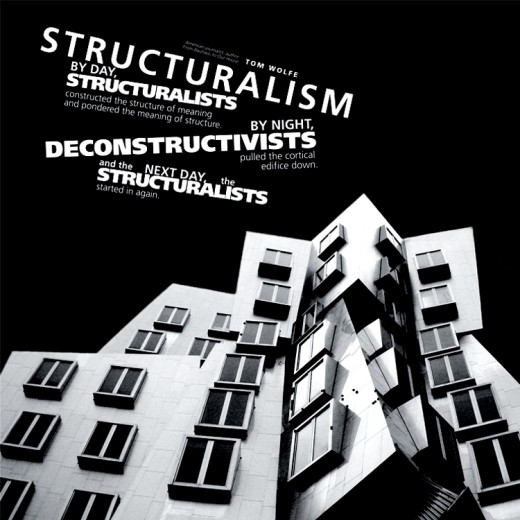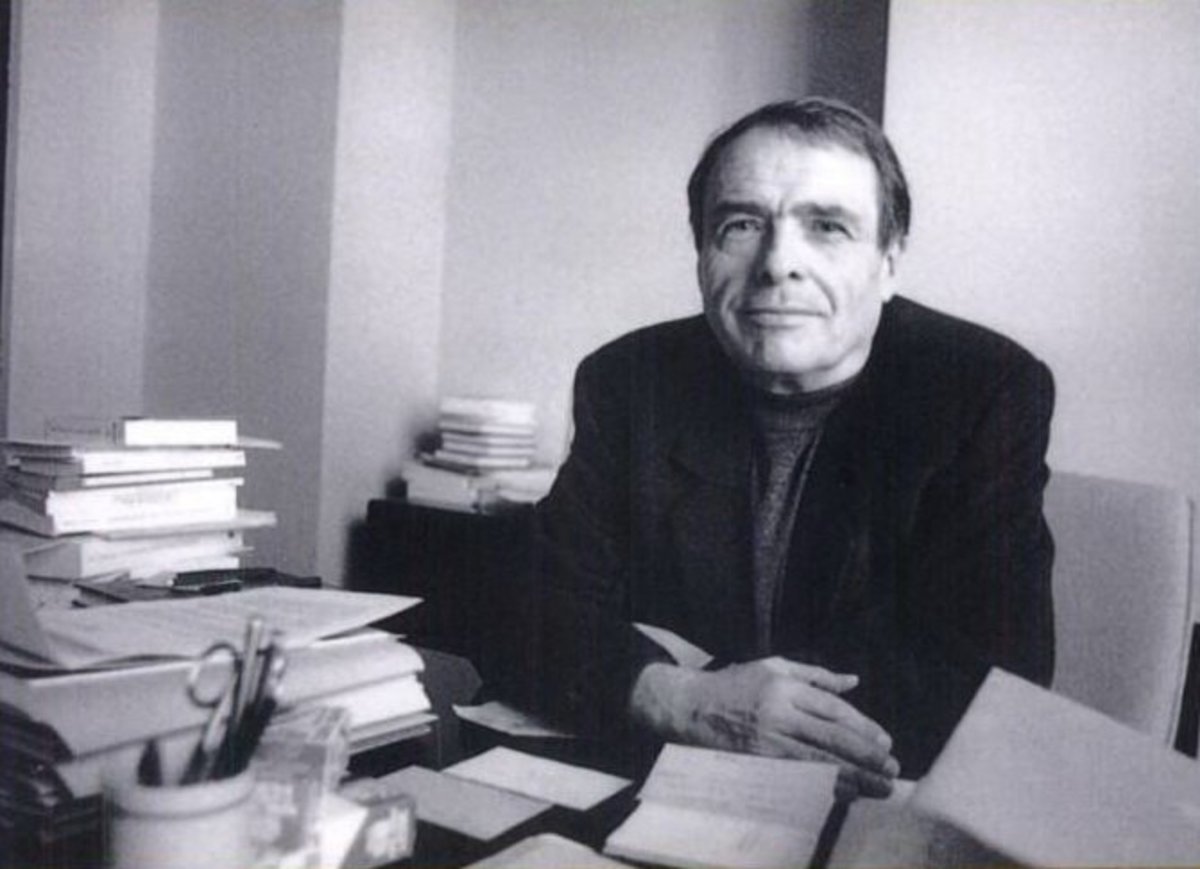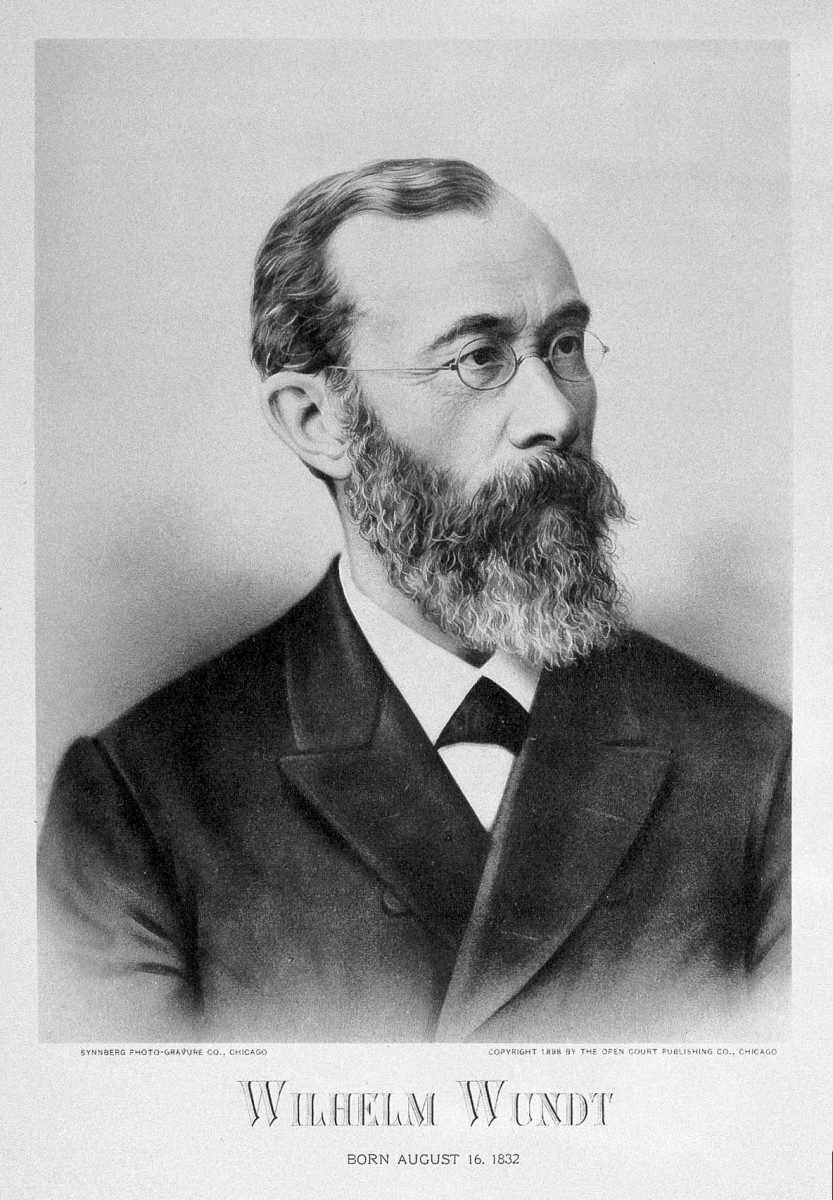Structuralism in Anthropology

STRUCTURALISM
ABSTRACT
Structuralism, an intellectual movement, appeared in France in 1950s in which culture is semiotically analyzed. Levi-Strauss, an anthropologist, applied structural linguistic of Ferdinand de Saussure to Anthropology.
STRUCTURALISM
Structuralism is an intellectual movement which starts in 1950s in France. In this movement culture is analyzed semiotically (system of signs). The Structuralism emerged or originated in the linguistics of Ferdinand de Saussure along with that of the Prague and Moscow schools. Structuralism appeared in academia in the second half of the 20th century and grew to become one of the most popular approaches in academic fields concerned with the analysis of language, culture, and society. The structuralist’s mode of reasoning has been applied in a diverse range of fields, including anthropology, sociology, psychology, literary criticism, and architecture. The most famous thinkers associated with structuralism include the linguist Roman Jakobson, the anthropologist Claude Lévi-Strauss, the psychoanalyst Jacques Lacan, the philosopher and historian Michel Foucault, the Marxist philosopher Louis Althusser, and the literary critic Roland Barthes. As an intellectual movement, structuralism came to take existentialism's pedestal in 1950s and 1960s in France. Most members of this movement did not describe themselves as being a part of any such movement.
Ferdinand de Saussure was the originator of the twentieth century reappearance of structuralism, and evidence of this can be found in Course in General Linguistics, written by Saussure's colleagues after his death and based on student notes. Saussure focused not on the use of language (parole, or speech), but rather on the underlying system of language (langue) and called his theory “Semiology”. However, the discovery of the underlying system had to be done via examination of the parole (speech). As such, Structural Linguistics is actually an early form of corpus linguistics (quantification). This approach focused on examining how the elements of language related to each other as a system of signs, that is, 'synchronically' rather than how language develops over time, that is, 'diachronically'. Finally, he argued that linguistic signs were composed of two parts, a signifier (the sound pattern of a word, either in mental projection—as when we silently recite lines from a poem to ourselves—or in actual, physical realization as part of a speech act) and a signified (the concept or meaning of the word). This was quite different from previous approaches which focused on the relationship between words and the things in the world that they designate.
The clearest and most important example of PragueSchool structuralism lies in phonemics. Rather than simply compile a list of which sounds occur in a language, the PragueSchool sought to examine how they were related. They determined that the inventory of sounds in a language could be analyzed in terms of a series of contrasts.
According to structural theory in anthropology and social anthropology, meaning is produced and reproduced within a culture through various practices, phenomena and activities that serve as systems of signification. A structuralist approach may study activities as diverse as food preparation and serving rituals, religious rites, games, literary and non-literary texts, and other forms of entertainment to discover the deep structures by which meaning is produced and reproduced within the culture.
Structuralism rejected the concept of human freedom and choice and focused instead on the way that human behavior is determined by various structures. The most important initial work on this score was that of Claude Lévi-Strauss in his famous volume published in 1949 titled as “Elementary Structures of Kinship”. Lévi-Strauss was known of Jakobson during their time together in New York during World War II and was influenced by both Jakobson's structuralism as well as the American anthropological tradition. In Elementary Structures he examined kinship systems from a structural point of view and demonstrated how apparently different social organizations were in fact different arrangements or orders of a few basic kinship structures. In the late 1950s he published “Structural Anthropology”, a collection of essays outlining his program for structuralism.
Work of Different People in Structuralism
Claude Levi-Strauss: (1908 – 2009)
Claude Lévi-Strauss was born in 1908. He was a French anthropologist and ethnologist, and was known as the "father of modern anthropology”. He argued that the "savage" mind had the same structures as the "civilized" mind and that human characteristics are the same everywhere. These observations culminated in his famous book “Tristes Tropiques”, which positioned him as one of the central figures in the structuralist school of thought, where his ideas reached into fields including the humanities, sociology and philosophy. Structuralism has been defined as "the search for the underlying patterns of thought in all forms of human activity." He was honored by universities throughout the world and held the chair of Social Anthropology at the Collège de France (1959–1982); he was elected a member of the Académie Française in 1973. In 2008 he became the first member of the Académie Française to reach the age of 100 and one of the few living authors to have his works published in the Bibliothèque de la Pléiade.
He died on 30 October 2009, a few weeks before his 101st birthday. The death was announced four days later. French President Nicolas Sarkozy described him as "one of the greatest ethnologists of all time". Bernard Kouchner, the French Foreign Minister, said “Lévi-Strauss broke with an ethnocentric vision of history and humanity. At a time when we are trying to give meaning to globalization, to build a fairer and more humane world, I would like Claude Lévi-Strauss's universal echo to resonate more strongly".
Levi-Strauss’s work in Linguistics
Lévi-Strauss sought to apply the structural linguistics of Ferdinand de Saussure to anthropology. At the time, the family was traditionally considered the fundamental object of analysis, but was seen primarily as a self-contained unit consisting of a husband, a wife, and their children. Nephews, cousins, aunts, uncles, and grandparents all were treated as secondary. Lévi-Strauss argued that, families acquire determinate identities only through relations with one another. Thus he inverted the classical view of anthropology, putting the secondary family members first and insisting on analyzing the relations between units instead of the units themselves. In his own analysis of the formation of the identities that arise through marriages between tribes, Lévi-Strauss noted that the relation between the uncle and the nephew was to the relation between brother and sister, as the relation between father and son is to that between husband and wife, that is, A is to B as C is to D. Therefore if we know A, B, and C, we can predict D, just as if we know A, and D, we can predict B and C. The goal of Lévi-Strauss's structural anthropology, then, was to simplify the masses of empirical data into generalized, comprehensible relations between units, which allow for predictive laws to be identified, such as A is to B as C is to D.
Lévi-Strauss identified myths as a type of speech through which a language could be discovered. This theory attempted to explain how seemingly fantastical and arbitrary tales, could be so similar across cultures. Because he believed there was not one "authentic" version of a myth, rather that they were all manifestations of the same language, he sought to find the fundamental units of myth, namely, “The Mytheme”. Lévi-Strauss broke each of the versions of a myth down into a series of sentences, consisting of a relation between a function and a subject. Sentences with the same function were given the same number and bundled together. These are mythemes.
What Lévi-Strauss believed he had discovered when he examined the relations between mythemes was that a myth consists of nothing but binary oppositions. Oedipus, for example, consists of the overrating of blood relations and the underrating of blood relations, the autochthonous origin of humans and the denial of their autochthonous origin. Influenced by Hegel, Lévi-Strauss believed that the human mind thinks fundamentally in these binary oppositions and their unification (the thesis, antithesis, synthesis triad), and that these are what make meaning possible. Furthermore, he considered the job of myth to be a sleight of hand, an association of an irreconcilable binary opposition with a reconcilable binary opposition, creating the illusion, or belief, that the former had been resolved.
Lévi-Strauss's theories are set forth in Structural Anthropology (1958). Briefly, he considers culture a system of symbolic communication, to be investigated with methods that others have used more narrowly in the discussion of novels, political speeches, sports, and movies. His reasoning makes best sense when contrasted against the background of an earlier generation's social theory. He wrote about this relationship for decades.
In Lévi-Strauss work, the methods of linguistics became a model for all his earlier examinations of society. His analogies usually are from phonology (though also later from music, mathematics, chaos theory, cybernetics, and so on).
"A really scientific analysis must be real, simplifying, and explanatory," he says (in Structural Anthropology). Phonemic analysis reveals features that are real, in the sense that users of the language can recognize and respond to them. At the same time, a phoneme is an abstraction from language–not a sound, but a category of sound defined by the way it is distinguished from other categories through rules unique to the language. The entire sound-structure of a language may be generated from a relatively small number of rules.
In the study of the kinship systems that first concerned him, this ideal of explanation allowed a comprehensive organization of data that partly had been ordered by other researchers. The overall goal was to find out why family relations differed among various South American cultures. The father might have great authority over the son in one group, for example, with the relationship rigidly restricted by taboos. In another group, the mother's brother would have that kind of relationship with the son, while the father's relationship was relaxed and playful.
Ferdinand de Saussure
In “A course in linguistic” (1916) Ferdinand de Saussure outlined 3 fundamentals assumptions:
1: Arbitrariness
The meanings we attribute to words are entirely arbitrary, and prescribed through usage and convention only. There is no inherent or natural connection between the word and the meaning. The word has no quality that suggests the meaning (except perhaps in onomatopoeic words like ‘hiss’, ‘gurr’ or ‘cuckoo’), nor does meaning ‘reside’ in the word. Therefore language cannot be said to stand for or reflects, reality or the world: language is a system itself. Language refers only to itself, since all words leads to other words. To phrase it is its proper terminology, the relation between signifies (the word) and the signified (meaning) is purely arbitrary.
2: Rational
Every word make sense (has meaning) because it is different from other words, in the organizational chain. The ‘cat’ means cat only because if it’s different from ‘cap’ or ‘hat’.
3: systematic
Language constitutes our world, and our very existence. We need to analyze how meaning is produced through the art of language. We need to understand the set of structures in language that enable us to speak and make sense. In short, we need to study signs and sign system.
Language constructs the very nature of the preparation of reality. Thus literary/visual/musical texts are structured like a language, or what they call its ‘grammar’. Art is a system with in and in relation to other systems in a particular culture, all of which are based upon the linguistic model.
Structuralism seeks the process of meaning-production, that is, how the text constructs meaning. Anything that generates the meaning through certain form of representation in a ‘text’ there the notion of text suggests more than the printed word and is taken to include all forms of communication- visual, gestural, verbal, and aural. The TV soap opera, sports, wrestling, the novel, politicians, speeches, music our identity are all texts constructed in language through a process of rationality (in relation with other thing) and difference (our difference from other that generates our unique identity we can call ‘our meaning’).
Cultural system work in pairs- or what structuralist calls ‘binary opposition’. Thus ‘cat’ and ‘hat’ is a pair that defines each other in term of their differences (cat is not hat). That is just like language works through a system of relations and differences, culture works through a series of relations and oppositions.
Ronald Barthes
His work in mythologies (1972) has provided exceptionally useful for cultural studies. In his study of fashion, Barthes analyzes the rhetoric of fashion writing. We have the fashion of signifier where meaning derives from the object (e.g. cap) its support (the head) and the variant (caps/hats). The fashion signified in the external context shared by a society (‘woolen equals winters’). Thus the meaning of advertisement-text is available to us because:
- We understood that caps or hats are to be worn on the head (the grammar or rules of the text of clothing).
- We understood the larger contexts in which certain kinds of clothing are needed and worn.
Meaning is the combination of two- the grammar of the text and the grammar of the grammar of the cultural contexts.
A cap is worn on the head as opposed to a shoe which is worn on the foot; cotton clothing is worn in summer as opposed to woolens which are worn in winter.
Notice here that the binaries are between items of clothing between seasons and cultural contexts. There is clearly a structure at work.
“Structuralism in cultural studies asks us to look at the rules that governs meaning formation through a system of differences and relations between signs and their contexts”
Dick Hebdige
His work bulb brilliantly on Barbarism semiology and set a thread for cultural studies. For Hebdige style is signifying (that the meaning) practice. This style is attained through the transformation of signs of commodities, through ‘bricolage’ into new meaning in fresh. Some times unexpected contexts. Analyzing punk, Hebdige argue that it was a dramatization of British economics and social decline that had erupted into frustration and anger among the youth. It thus used objects of sexual fetishes (leather, chains and bondage gear) in word robe styles noise and ‘obscene’ lyrics in music, unruly/jerky dance movement and so on. What punk did was to use language in such a radically different way that notions of ‘taste’ in music, ‘beauty in looks/appearance’ and opportunities in dancing or behavior were questioned and subverted. Thus, the powerless of punsters inspire them to evolve a new grammar of fashion and a new politics of culture. They used their bodies to generate art and music because they could not afford the expensive halls and theaters where high art forms like the opera were held. Punk is thus mass cultural form.
Emergence of Post Structuralism
Post-structuralism, a movement emerged in France during the 1960s which criticized structuralism. The period was marked by political anxiety, as students and workers alike rebelled against the state in May 1968, nearly causing the downfall of the French government. As a result, there was increased interest in alternative radical philosophies, including feminism, Western Marxism, anarchism, and phenomenology. These disparate perspectives, which Michel Foucault later labeled "subjugated knowledge," were all linked by being critical of dominant Western philosophy and culture. Post-structuralism offered a means of justifying these criticisms, by exposing the underlying assumptions of many Western norms. Post-structuralism philosophers like Derrida and Foucault did not form a self-conscious group, but each responded to the traditions of phenomenology and structuralism.The difference between structurlism and post- Structuralism was that structuralism, an intellectual movement in France in the 1950s and 1960s, that studied the underlying structures in cultural products and used analytical concepts from linguistics, psychology, anthropology and other fields to interpret those structures. It emphasized the logical and scientific nature of its results.
Post-structuralism offers a study of how knowledge is produced and a critique of structuralism premises. It argues that because history and culture condition the study of underlying structures it is subject to biases and misinterpretations. To understand an object (e.g. one of the many meanings of a text), a post-structuralist approach argues, it is necessary to study both the object itself and the systems of knowledge that produced the object. Post-structural practices generally operate on some basic assumptions:
• Post-structuralists hold that the concept of "self" as a separate, singular, and coherent entity is a fictional construct. Instead, an individual comprises tensions between conflicting knowledge claims (e.g. gender, race, class, profession, etc.). Therefore, to properly study a text a reader must understand how the work is related to his or her own personal concept of self. This self-perception plays a critical role in one's interpretation of meaning. While different thinkers' views on the self (or the subject) vary, it is often said to be constituted by discourse(s). Lacan's account includes a psychoanalytic dimension, while Derrida stresses the effects of power on the self. This is thought to be a component of post-modernist theory.
• The author's intended meaning, such as it is (for the author's identity as a stable "self" with a single, discernible "intent" is also a fictional construct), is secondary to the meaning that the reader perceives. Post-structuralism rejects the idea of a literary text having a single purpose, a single meaning, or one singular existence. Instead, every individual reader creates a new and individual purpose, meaning, and existence for a given text. To step outside of literary theory, this position is generalizable to any situation where a subject perceives a sign. Meaning (or the signified, in Saussure's scheme, which is as heavily presumed upon in post-structuralism as in structuralism) is constructed by an individual from a signifier. This is why the signified is said to 'slide' under the signifier, and explains the talk about the "primacy of the signifier."
• A post-structuralist critic must be able to use a variety of perspectives to create a multifaceted interpretation of a text, even if these interpretations conflict with one another. It is particularly important to analyze how the meanings of a text shift in relation to certain variables, usually involving the identity of the reader.
Although many may have felt the necessity to move beyond structuralism, there was clearly no consensus on how this ought to occur. Much of the study of post-structuralism is based on the common critiques of structuralism. Roland Barthes is of great significance with respect to post-structuralist theory. In his work, Elements of Semiology (1967), he advanced the concept of the "Metalanguage". A metalanguage is a systematized way of talking about concepts like meaning and grammar beyond the constraints of a traditional (first-order) language; in a metalanguage, symbols replace words and phrases. In so far as one metalanguage is required for one explanation of first-order language, another may be required, so metalanguages may actually replace first-order languages. Barthes exposes how this structuralist system is regressive; orders of language rely upon a metalanguage by which it is explained, and therefore deconstruction itself is in danger of becoming a metalanguage, thus exposing all languages and discourse to scrutiny. Barthes' other works contributed deconstructive theories about texts.
A major theory associated with Structuralism was binary opposition. This theory proposed that there are certain theoretical and conceptual opposites, often arranged in a hierarchy, which human logic has given of text. Such binary pairs could include Enlightenment/Romantic, male/female, speech/writing, rational/emotional, signifier/signified, symbolic/imaginary.
Post-structuralism rejects the notion of the essential quality of the dominant relation in the hierarchy, choosing rather to expose these relations and the dependency of the dominant term on its apparently subservient counterpart. The only way to properly understand these meanings is to deconstruct the assumptions and knowledge systems which produce the illusion of singular meaning. This act of deconstruction illuminates how male can become female, how speech can become writing, and how rational can become emotional.
Associated mainly with the work of French philosopher Jacque Derrida, deconstruction and post structuralism provided a radically new approach to language, narrative and interpretation.
Derrida and differences
For post structuralist language is never stable. Meaning is the result of difference and this process of differentiation is endless. Meaning is never present in signs, simply because the sign refers to (yet) another sign which is not here. For example: in order to understand the tem ‘cat’ we need to understand ‘animal’ or ‘four legged’ or ‘organism’. Then we need to understand ‘animal’, ‘organism’ using words like ‘living’ or ‘nonliving’, which then require an explanation and understanding of ‘human’ and ‘life’. Notice how each term can be explained through newer terms. Meaning is never available in one term alone- it always implies and demand more terms.
Thus reading or interpretation in the movement through the chain of signs, seeking a temporary meaning signifier (word/sign) leads not to a stable end-signified but to more signified this implies that meaning is never fully graspable, and the final meaning is always postponed (deferred).
A sign may be reproduced any time any place (the inter ability or repeat ability of the sign). Thus it can be make to mean differentially each time it repeats in a different contexts. It never absolutely the same sign that are encounter at each moment of its repetition. It follows that if meaning is never fully present then human identity- which in the result and product of the language. It also never stable for unified the ‘presence’ of the identities or meaning is an illusion, for all presence is trained with the impurity of the absent and the excluded. The very term ‘structure’ free presupposes for unity, a centre and margin. There is never a center with out a margin. Infect, if we don’t have margins we can’t locate a center. This means the existence of the center is never definite and unified: it depends on the existence of the margin. The center is identified in its difference from the margin. And in order to explain the center, we need to refer to the margin. That in, the meaning of the term ‘center’ is the referred (postponed) until we explain the term ‘margin’. Hence meaning is available only through the difference and deference. To suggest the togetherness of these two feathers of the signs and meanings: Derrida coins the term difference (to stay both differ and defer). For Derrida the entire field of sign is ‘writing’. Here writing is not restricted to the graphic sense of the world, but refers to the figural sense: writing is the term used to denote any system that is based on difference and deference (difference), the study of such writing, Derrida term ‘grammatology’, the very science of the difference.
Michel Foucault and power/knowledge
Foucault was interested in the way power structure defend upon the structure of the knowledge, (arts, science, medicine and demographics) and how, once they acquire knowledge, creates subjects to be controlled. Foucault’s methodology seeks to understand how some sections of the population have been classified or criminals or insane. That is, he is interested in understanding the process of classification that helped exclude some people from society. He said that certain authorities who possess power in society produced knowledge about those who lack power. Such a system of knowledge is called ‘discourse’. The arts, religion, science and the law are discourses that ‘produce’ particular subjects.
British Neo-Structuralism
The British brand of structuralism was mainly espoused by Rodney Needham and Edmund Leach, who were both critical towards the structural-functionalist perspective and who drew on Lévi-Strauss as well as Arthur Maurice Hocart. However, they also found grounds for critiquing Lévi-Strauss. Leach, who in stark contrast to Lévi-Strauss was more concerned with researching people's actual lives than with the discovery of universal mental structures, found that the latter's analysis of the Kachin contained serious flaws. According to Leach, Lévi-Strauss' project had been overly ambitious, meaning that his analyses were too superficial and the available data treated with too little care. While part of his analysis of the Kachin was simply based on incorrect ethnographic information, the rest reflected Kachin ideology but not actual practice.
In theory, Kachin groups were supposed to marry in a circle ideally consisting of five groups. In reality, the system was strongly imbalanced with built-in status differences between superior wife-givers and inferior wife-takers. Lévi-Strauss had incorrectly assumed that wife-takers would be of higher rank than wife-givers; in reality, it was the other way round, and the former usually had to make substantial bride-wealth payments to obtain wives. Overall, some lineages would accumulate more wives and material wealth than others, meaning that the system cannot be said to be driven primarily by reciprocity.
Kinship is therefore not an isolated domain but linked to economic and political structures. Marriage exchanges need to be analysed within their wider economic and political context rather than in isolation, as Lévi-Strauss tended to do. Leach charged the latter with neglecting the effects of material conditions on social relations. He also challenged the claims to universality made by Lévi-Strauss about the model, doubting whether structures generated by marriage rules would be the same in different social contexts.







